Audi Suggests Computing Power Will Decide Industry Winners/Losers

With regulatory bodies the world over forcing the automotive sector to prioritize efficiency over mightiness, industry rhetoric has gradually shifted away from the powertrain. While every brand still wants to squeeze out all available power from ubiquitous four-cylinder motors, providing excess is only a priority in a handful of cases catering directly to enthusiasts.
The idea of a big, brutish luxury car with a monstrous engine still exists, but it’s being supplanted by technology-driven features catering to tech-focused minds and the green movement. Modern luxury is based in connectivity, applications, and distancing one from the experience of driving altogether — or at least that’s what the automotive industry now seems to believe.
And they may have a point. While we’re well aware those advocating “mobility” desperately want it so that they can tap into your data (to enhance revenue using the same grimy business tactics favored by big tech firms), carmakers also need something shiny to dangle in front of consumers so we’ll buy the latest and greatest product. The tech sector is also booming right now, and the industry’s dying to get investors back on its side after seeing the Wall Street performance of EV companies — especially Tesla Motors.
Even the traditionalists at Toyota are buying into it, announcing an important push into software development as they attempt to craft the next industry-standard operating system for cars. It’s also the song Volkswagen Group has sung ever since Dieselgate. Meanwhile, Audi recently explained its own commitment to software after its parent company (VW) tasked it with ensuring the botched launches of the ID.3 and Mk8 Golf don’t become commonplace.
The project involves taking around 200 employees and using them to accelerate the software going into a scalable vehicle platform; they’ll be allowed to operate somewhat autonomously from Volkswagen Group. Duesmann said this is necessary due to the stakes at play. The group already intends to bring a “highly automated” electric vehicle to the public in just a handful of years.
“To develop a new car with so many new features in this period until 2024 is so demanding that it is probably without precedent. That’s why we have decided to work with a separate unit,” he explained.
From Reuters:
With the advent of self-driving cars, vehicles need processors and software operating systems to analyze data from radar, lidar, and camera sensors to calculate driving reflexes so cars can navigate and avoid accidents on their own.
In the past, bigger cars with more powerful engines were automatically better. Now computing power and intelligence will be a key metric for defining what is premium, forcing Audi and VW to retool the way they design cars.
“Technical development of vehicles is no longer organized according to a vehicle’s size, but by the car’s electrical and electronic architecture,” Duesmann said, explaining that premium and high-value models would now differentiate themselves according to their computing power and sensor levels.
We’d like to use this opportunity to remind our readers that self-driving cars still don’t exist. The technology has seen its development slow to a crawl in recent years as R&D teams realized training a machine to account for all variables is a difficult proposition. It should also be said that “bigger cars with more powerful engines” are still objectively better. Circumstances (income, where one lives, etc.) and personal preference may direct someone toward a smaller, less potent automobile — often resulting in the ideal product for the customer — but more is still more in terms of cars.
Until Bentley starts selling pint-sized economy models for $250,000 and Lamborghini stops thinking 0-60 times matter, that will remain true. However, convincing the public that something using half the materials is worth as much as an older design with twice the mass and a juicier dyno sheet (like Dodge) would be a boon to automakers looking to sell you on touchscreens and the same connectivity that’s already available on your phone. The only real bright spot is the enhanced safety features offered by equipping cars with sensors and more computer power, but those systems have proven occasionally annoying, highly fallible, and may even make us worse motorists.
Still, there may be no other way. Much of the industry is already deep into the process of digitizing everything it possibly can as the situation snowballs down the mountain. Any company snubbing the assumed technological bonanza runs the risk of looking old-fashioned, falling behind and losing out on wads of cash made available through data acquisition and updated business models. This is also why so many of these big moves between industry giants look so similar.
Audi’s Project Artemis is a near carbon copy of Woven Planet Holdings (aka the rebranded Toyota Research Institute). Both use names that distance themselves from traditional industry players, designed to welcome new partnerships and outside investment. Self-driving is a concern but secondary to building on the software used for in-car operating systems and the new features they bring to the table. Ideally, VW Group would like to see this happen as quickly as possible.
“If we gain speed with a supplier or with a software company, we will consider it. Speed is extremely important,” Duesmann said. China is also supposed to play a large role in the program but the CEO declined to elaborate.
Artemis will be working alongside VW’s Car.Software team, rather than absorbing it. Duesmann noted it will be important to have staffers embedded in various departments to ensure a degree of mental flexibility. Not that we’re seeing many new ideas, overall. The public now understands that the promise of self-driving vehicles is a largely empty one, and Artemis’ plan to bring a semi-autonomous vehicle to market by 2024 sounds awful familiar. Audi’s real goal is solving Volkswagen’s software issues while gently copying BMW’s Project i… which was established roughly a decade ago and has already delivered a couple of novelty cars.
[Image: JL IMAGES/Shutterstock]

A staunch consumer advocate tracking industry trends and regulation. Before joining TTAC, Matt spent a decade working for marketing and research firms based in NYC. Clients included several of the world’s largest automakers, global tire brands, and aftermarket part suppliers. Dissatisfied with the corporate world and resentful of having to wear suits everyday, he pivoted to writing about cars. Since then, that man has become an ardent supporter of the right-to-repair movement, been interviewed on the auto industry by national radio broadcasts, driven more rental cars than anyone ever should, participated in amateur rallying events, and received the requisite minimum training as sanctioned by the SCCA. Handy with a wrench, Matt grew up surrounded by Detroit auto workers and managed to get a pizza delivery job before he was legally eligible. He later found himself driving box trucks through Manhattan, guaranteeing future sympathy for actual truckers. He continues to conduct research pertaining to the automotive sector as an independent contractor and has since moved back to his native Michigan, closer to where the cars are born. A contrarian, Matt claims to prefer understeer — stating that front and all-wheel drive vehicles cater best to his driving style.
More by Matt Posky
Latest Car Reviews
Read moreLatest Product Reviews
Read moreRecent Comments
- The Oracle Massive job cuts at their state-funded facility in Buffalo. Tesla is quick to throw resources at programs to get them launched, and quick to contract when the models are in serial production:
- Cprescott Golf carts were so 1900 and so 2020. Everyone who wants one has one and is trading them in for hybrids.
- Cprescott If it were Honduh or Toyoduh's I would set it on fire.
- EBFlex Remember this is an area of the market with what we’re told is insatiable demand that current production cannot meet. Yet Tesla, the only real EV player in North America is laying people off. This is bad news bears for the EV market. Maybe the government can make demand even more artificially inflated to correct this major problem
- Kwik_Shift_Pro4X "That's a shame." ---- J. Seinfeld



















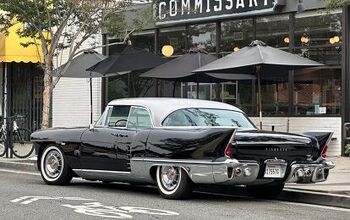
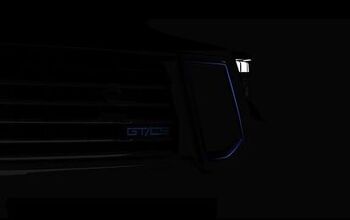
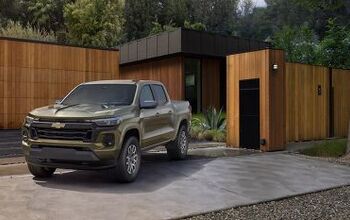
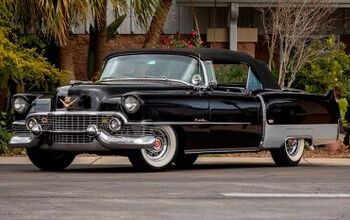
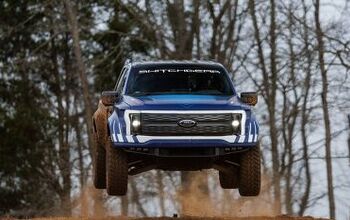
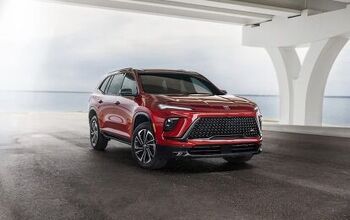
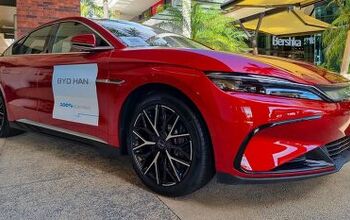

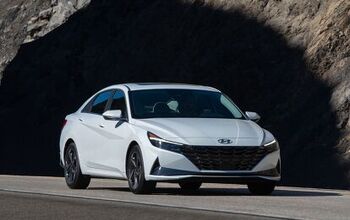
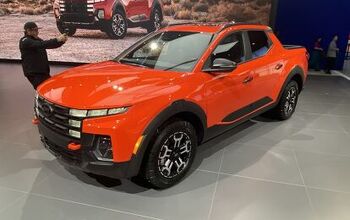





Comments
Join the conversation
Duesman has it wrong. It's not computing. Material science will be a much bigger factor. It's not just the exotic metallurgy involved in developing new coatings for battery electrodes. It applies to ICE vehicles as well. Cylinder coatings and materials, lighter and more durable body parts and other components will be critical. New materials will be needed to facilitate large scale additive manufacturing. Nanotechnology and similar technologies should the most important priorities for any auto company.
This does not get my pulse going at all. The trend this guy is talking about is car-as-appliance. If driving is not entertaining because the car is anodyne, I'm not sure a bunch of gadgets is going to remedy the situation. Strike the entertainment and what's left is a device that transports you and X number of others from A to B comfortably, reliably and efficiently. In other words, a Toyota. Leaving aside for a moment the fact that a 4-cylinder engine can be pressurized sufficiently with a combination of turbochargers, electric turbochargers and superchargers (I'm looking at you, Volvo.) to develop sufficient horsepower and torque to move anything down the road with reasonable alacrity, the fact is that 2 liter 4 cylinder engines are inherently guttural, rough and agricultural sounding. There are just not enough power pulses per revolution. In fact, using forced induction to generate higher output just makes the situation worse, not better. If "luxury" is smoothness, then any vehicle powered by a 4 cylinder engine is a fail. I'd much rather have the 3-liter BMW in-line 6 of the early 2000s, even with 25 less horsepower than the current BMW turbo 2 liter 4 (or similar engines from Mercedes). If that's my choice and I'm a luxury buyer, give me a Tesla any day of the week.